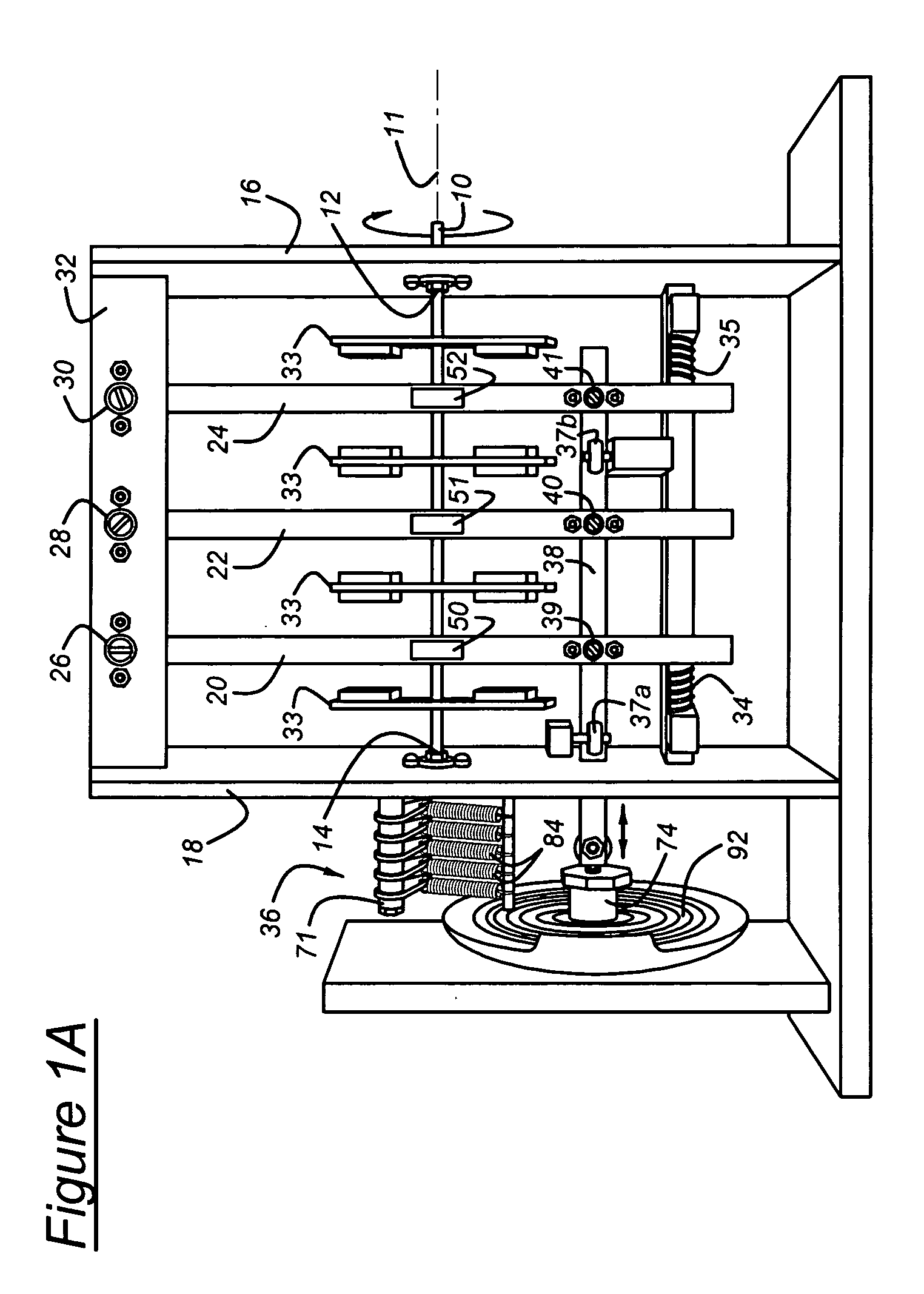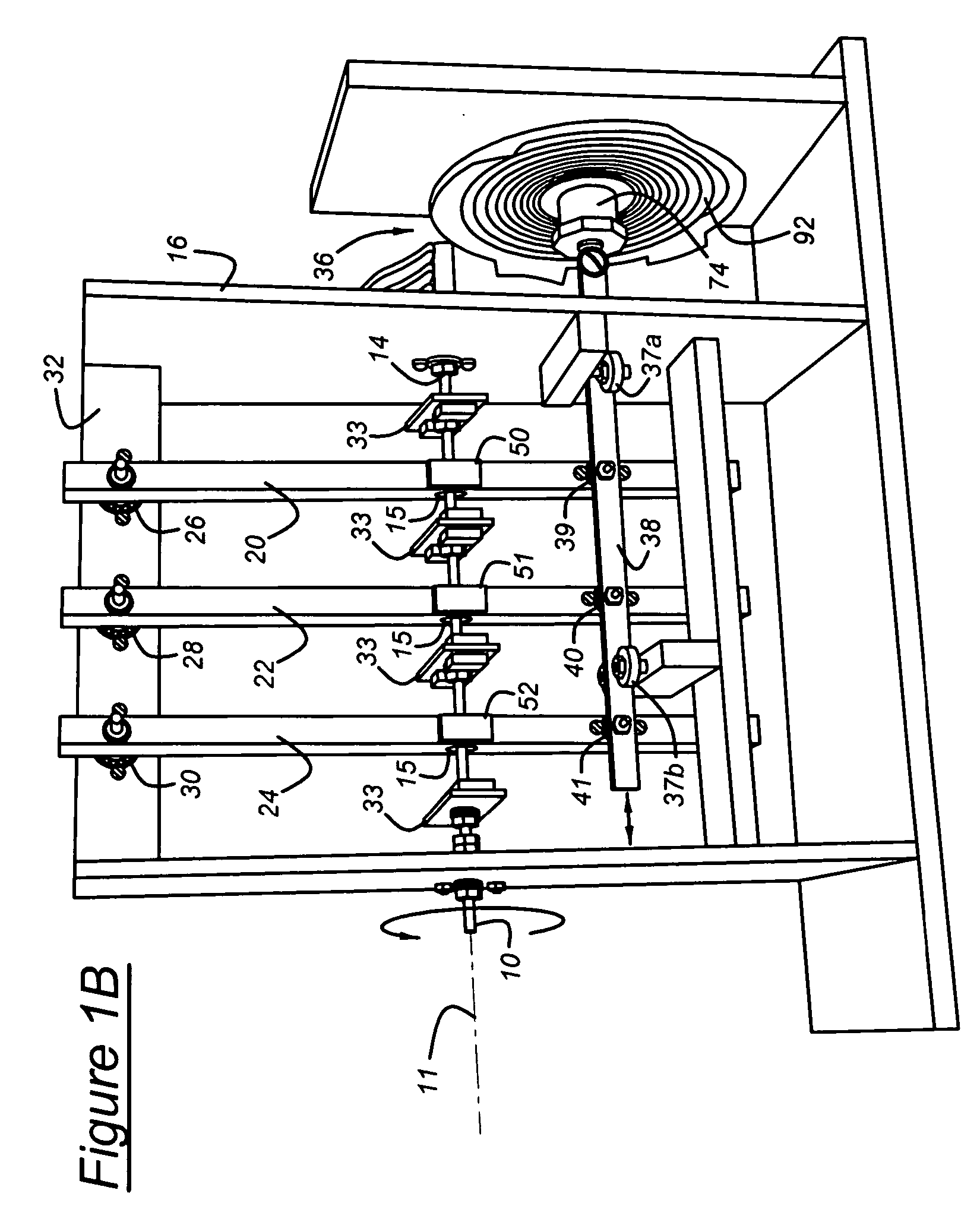Permanent magnet generator
a permanent magnet generator and generator technology, applied in the direction of magnetic circuit rotating parts, magnetic circuit shape/form/construction, mechanical energy handling, etc., can solve the problems of reducing the efficiency of the motor and the operating efficiency of the motor system of this type, and achieve the effect of easy starting
- Summary
- Abstract
- Description
- Claims
- Application Information
AI Technical Summary
Benefits of technology
Problems solved by technology
Method used
Image
Examples
third embodiment
[0058]FIG. 11 shows the drive motor in which the radial outer portion of the rotor plates 33′ are skewed relative to the axis 11 such that the poles of the rotor magnets 42-49 are canted relative to the poles of the reciprocating magnets 50-52. Operation of the drive motor arranged as shown in FIG. 11 is identical to the operation described with reference to FIGS. 2 and 3.
fourth embodiment
[0059]FIGS. 13 and 14 show the drive motor, in which each of two reciprocating magnets 50, 51 is located on an axially opposite side of a rotor magnet pair 44, 45. Operation of the drive motor arranged as shown in FIGS. 13 and 14 is identical to the operation described with reference to FIGS. 2 and 3.
[0060] The direction of the rotational output can be in either angular direction depending on the direction of the starting torque.
[0061] The drive motor can produce reciprocating output on actuator arm 38 instead of the rotational output described above upon disconnecting actuator arm 38 from actuator 36, and connecting a crank, or a functionally similar device, in the drive path between the actuator and the rotor shaft 10. The crank converts rotation of the rotor shaft 10 to reciprocation of the actuator 36. In this case, the rotor shaft 10 is driven rotatably in either direction by the power source, and the output is taken on the reciprocating arm 38, which remains driveably connect...
PUM
 Login to View More
Login to View More Abstract
Description
Claims
Application Information
 Login to View More
Login to View More - R&D
- Intellectual Property
- Life Sciences
- Materials
- Tech Scout
- Unparalleled Data Quality
- Higher Quality Content
- 60% Fewer Hallucinations
Browse by: Latest US Patents, China's latest patents, Technical Efficacy Thesaurus, Application Domain, Technology Topic, Popular Technical Reports.
© 2025 PatSnap. All rights reserved.Legal|Privacy policy|Modern Slavery Act Transparency Statement|Sitemap|About US| Contact US: help@patsnap.com



